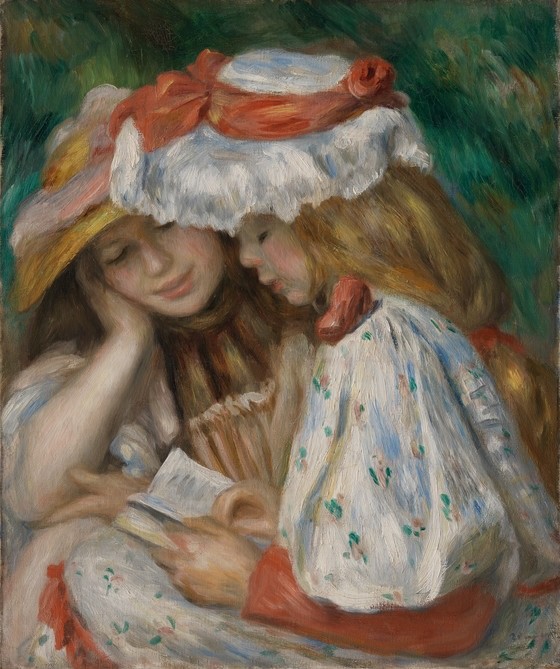The Role of Letter Names in Learning to Read is Still Curious
The original blog entry included a misinterpretation of a study by Byrne and Fielding-Barnsley. I assumed that when they introduced letters into their PA intervention that they named the letters. I was incorrect in that assumption as Christopher Such a vigilant reader of this blog noticed. That means that there is no evidence that teaching letter names improves reading achievement (though including plastic letters in PA instruction was positive). There is also no evidence that students are benefited by not teaching letter names or that it is better to only introduce sounds for letters than for names. That means I still side with theories that argue for spending a small amount of time teaching letters, but unlike what is incorrectly claimed in this blog, there is still NO direct evidence supporting that belief. This note was added on September 30, 2024 -- I made no changes to the original entry, so it is easy to see my mistake and to disregard to the errant evidentiary claim.
RELATED: How Can I Teach with Books that are Two Years Above Student Reading Levels?
Teacher question:
I have a question regarding letter naming. I know that for decades, letter naming fluency has been a reliable predictor of future reading ability. I'm wondering if there are any recent studies that continue to uphold this truth. At our school, we are seeing more and more children start kindergarten with very low letter-name knowledge. Yet, our reading scores, for the most part are high. We are in an affluent, education-focused community, and the parents at our school seem to have a good amount of buy-in... yet their kids don't know their letter names! I guess I'm wondering if letter naming is still as reliable a predictor as it used to be.
Shanahan responds:
Indeed, letter name knowledge continues to be the best or one of the best predictors of later reading achievement (e.g., Adlof, Catts, & Lee, 2010; Bond, & Dykstra, 1997; Fletcher, & Satz, 1982; Hammill, 2004; Kegel, & Bus, 2014; Schatschneider, Fletcher, Francis, Carlson, & Foorman, 2004). Consistently, for the past century, studies report reasonably high correlations between letter name knowledge and reading. They vary a bit from study to study depending on how early the letter knowledge is assessed, the outcome prediction (word reading or comprehension), and when the outcome is gauged (kindergarten, first grade, second grade. later).
But knowing the letter names has consistently predicted later reading successfully.
That doesn’t mean that every kindergartner who doesn’t know his/her ABCs is on the way to a lifetime of illiteracy. The correlations vary, but .50 is a reasonable estimate. Alphabet knowledge explains or predicts 25% of the variation in later reading scores. That means that if letter name knowledge causes literacy learning and we could make all kindergartners know their ABCs, there would be 25% less variation in reading ability (that means fewer strugglers).
Of course, a correlation of .50 doesn’t mean that everyone who knows their letters does well in reading or that everyone who starts school without letter names tattooed on their brains won’t learn to read. It is a correlation and far from a perfect one. Given the size of the prediction, it would not be surprising that your kids succeed despite this lack of knowledge.
The important question is, “Is the relationship causal?” Does knowing one’s letters make any difference in learning to read?
There is no obvious functional role for letter names in reading, so it has long been supposed that ABC knowledge isa proxy for some other variable. One idea has been that kids who know more letters are more intelligent. Being able to remember up to 52 meaningless symbols must reveal something about attention, perseverance, memory, and so on.
Another claim has been that ABC knowledge comes about because more educated parents teach this to their children prior to school entrance. Those kinds of parents are likely to continue to offer support, so the numbers of letters known are no more than an index of how much help mom and dads will provide in the future.
That all makes sense until you look closer at the strange letter name data. ABC knowledge is a better predictor of eventual reading progress than IQ. Also, low socio-economic status parents appear to be more committed to teaching the ABCs than those highly educated parents (e.g., Burgess, 1999; Hoyne, & Egan, 2022; Robins, Ghosh, Rosales, & Treiman, 2014; Sénéchal, 2006). The latter might be an example of what you are seeing in your school.
Another weird pattern is that knowledge of the ABCs is one of the best predictors of math achievement, too. Now come on. That really makes no sense.
We don’t really know why alphabet knowledge is such a good predictor, but it is. If you are trying to identify who might be at risk in your kindergarten, it must be considered (along with phonemic awareness, invented spelling, RAN, oral language). I don’t think anyone would disagree with that.
However, if the issue is whether you should teach the ABCs as part of early reading instruction, then you’ll get a pretty good argument. Most programs include the ABCs, with some going a little crazy over it (like letter of the week efforts). Others strenuously object to the teaching of the ABCs (e.g., Diane McGuiness) arguing that letter names are confusing and advocating instruction in sounds but with no names.
I suspect the right answer is someplace in between.
Studies of teaching the alphabet (and there aren’t many) have not found gains in reading achievement due to this tuition (e.g., NELP, 2008; Ohnmacht, 1969 cited in Gibson & Levin, 1975; Roberts, 2003). That suggests not putting much time into teaching the ABCs. Twenty-six weeks on teaching letters is overkill (Reutzel, 1992).
Why should we teach the letters at all?
There are no studies in which groups are either taught letter names or not that show such teaching improves reading achievement. But there is research showing that teaching phonemic awareness has a positive impact on learning to read (NRP, 2000; NELP, 2002), and that teaching letters along with PA multiplies the PA effect (Byrne-Fielding-Barnsley, 1995). It almost triples the payoff. Teaching PA improves reading, teaching PA along with letter names improves it even more. Much more.
I would teach kindergartners decoding and word reading including phonemic awareness, letter names, letter sounds, how to write the letters, morphology, and spelling and I would encourage activities like invented spelling. That’s the surest way to achieve maximum decoding ability – other things are needed to bolster the language comprehension part of the equation.
Let’s face it. Everything has a name. Pretending that letters are an exception won’t improve reading achievement, and teaching the sounds as names will have limited value and add unnecessary confusion (what do we call the letter “e,” in that case: ?, ?, /?/, and of course there is the silent e?).
Beginners do rely on letter names as a reminder of the sounds, and that works sometimes (Venezky, 1975). When there is a misunderstanding (e.g., making the /d/ for W), it is decidedly brief.
There are theories as to why we should teach letter names (Foulin, 2005; Seidenberg, 2018), and I think they hold water. But to tell the truth these explanations don’t matter. In a nod to Jerry McGuire, you had me when you said teaching letter names tripled the impact of phonemic awareness on early reading achievement.
READ MORE: Shanahan on Literacy Blogs
References
Adlof, S. M., Catts, H. W., & Lee, J. (2010). Kindergarten predictors of second versus eighth grade reading comprehension impairments. Journal of Learning Disabilities, 43(4), 332-345. https://doi.org/10.1177/0022219410369067
Bond, G. L., & Dykstra, R. (1997). The cooperative research program in first?grade reading instruction. Reading Research Quarterly, 32(4), 348-427. https://doi.org/10.1598/RRQ.32.4.4
Burgess, S. (1999). The influence of speech perception, oral language ability, the home literacy environment, and prereading knowledge on the growth of phonological sensitivity: A 1-year longitudinal study. Reading Research Quarterly, 34(4), 400-402. https://doi.org/10.1598/RRQ.34.4.1
Byrne, B., & Fielding-Barnsley, R. (1995). Evaluation of a program to teach phonemic awareness to young children: A 2- and 3-year follow-up and a new preschool trial. Journal of Educational Psychology, 87(3), 488-503.
Fletcher, J. M., & Satz, P. (1982). Kindergarten prediction of reading achievement: A seven-year longitudinal follow-up. Educational and Psychological Measurement, 42(2), 681-685. https://doi.org/10.1177/001316448204200233
Foulin, J. N. (2005). Why is letter-name knowledge such a good predictor of learning to read? Reading and Writing: An Interdisciplinary Journal, 18(2), 129-155. https://doi.org/10.1007/s11145-004-5892-2
Hammill, D. D. (2004). What we know about correlates of reading. Exceptional Children, 70(4), 453-468.
Hoyne, C., & Egan, S. M. (2022). ABCs and 123s: A large birth cohort study examining the role of the home learning environment in early cognitive development. Journal of Experimental Child Psychology, 221, 1-17. https://doi.org/10.1016/j.jecp.2022.105424
Kegel, C. A. T., & Bus, A. G. (2014). Evidence for causal relations between executive functions and alphabetic skills based on longitudinal data. Infant and Child Development, 23(1), 22-35. https://doi.org/10.1002/icd.1827
National Early Literacy Panel. (2008). Developing early literacy. Washington, DC: National Institute for Literacy.
National Reading Panel. (2000). Report of the National Reading Panel. Washington, DC: National Institute for Child Health and Human Development.
Riley, J. L. (1996). The ability to label the letters of the alphabet at school entry: A discussion on its value. Journal of Research in Reading, 19(2), 87-101. https://doi.org/10.1111/j.1467-9817.1996.tb00090.x
Roberts, T. A. (2003). Effects of alphabet-letter instruction on young children's word recognition. Journal of Educational Psychology, 95(1), 41-51. https://doi.org/10.1037/0022-0663.95.1.41
Robins, S., Ghosh, D., Rosales, N., & Treiman, R. (2014). Letter knowledge in parent–child conversations: Differences between families differing in socio-economic status. Frontiers in Psychology, 5, 11. https://doi.org/10.3389/fpsyg.2014.00632
Schatschneider, C., Fletcher, J. M., Francis, D. J., Carlson, C. D., & Foorman, B. R. (2004). Kindergarten prediction of reading skills: A longitudinal comparative analysis. Journal of Educational Psychology, 96(2), 265-282. https://doi.org/10.1037/0022-0663.96.2.265
Sénéchal, M. (2006). Testing the home literacy model: Parent involvement in kindergarten is differentially related to grade 4 reading comprehension, fluency, spelling, and reading for pleasure. Scientific Studies of Reading, 10(1), 59-87. https://doi.org/10.1207/s1532799xssr1001_4
Venezky, Richard L. (1975). The curious role of letter names in reading instruction. Visible Language, 9(1), 7-23.







Comments
See what others have to say about this topic.